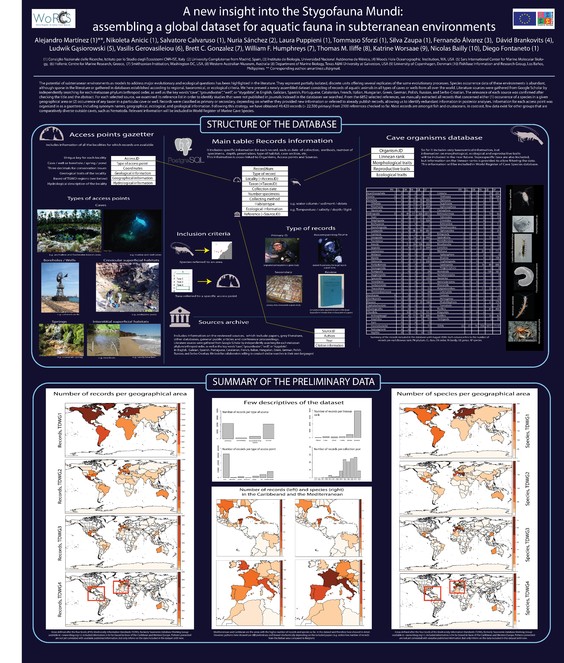|
ARPHA Conference Abstracts : Conference Abstract
|
|
Corresponding author: Alejandro Martinez (amartinez.ull@gmail.com)
Received: 04 Sep 2018 | Published: 11 Sep 2018
© 2018 Alejandro Martinez, Nikoleta Anicic, Salvatore Calvaruso, Nuria Sanchez, Laura Puppieni, Tommaso Sforzi, Silvia Zaupa, Fernando Alvarez, Dávid Brankovits, Ludwik Gąsiorowski, Vasilis Gerovasileiou, Brett Gonzalez, William Humphreys, Thomas Iliffe, Katrine Worsaae, Nicolas Bailly, Diego Fontaneto
This is an open access article distributed under the terms of the Creative Commons Attribution License (CC BY 4.0), which permits unrestricted use, distribution, and reproduction in any medium, provided the original author and source are credited.
Citation: Martinez A, Anicic N, Calvaruso S, Sanchez N, Puppieni L, Sforzi T, Zaupa S, Alvarez F, Brankovits D, Gąsiorowski L, Gerovasileiou V, Gonzalez B, Humphreys W, Iliffe T, Worsaae K, Bailly N, Fontaneto D (2018) A new insight into the Stygofauna Mundi: assembling a global dataset for aquatic fauna in subterranean environments. ARPHA Conference Abstracts 1: e29514. https://doi.org/10.3897/aca.1.e29514
|
|
Abstract
The potential of subterranean environments as models to address major evolutionary and ecological questions has been highlighted in the literature. They represent partially isolated, discrete units offering several replicates of the same evolutionary processes. Species occurrence data of these environments is abundant, although sparse in the literature or gathered in databases established according to regional, taxonomical, or ecological criteria. We here present a newly assembled dataset consisting of records of aquatic animals in all types of caves or wells from all over the world. Literature sources were gathered from Google Scholar by independently searching for each metazoan phylum/arthropod order, as well as the key words “cave”, “groundwater”, “well”, or “stygobite”, in English, Galician, Spanish, Portuguese, Catalonian, French, Italian, Hungarian, Greek, German, Polish, Russian, and Serbo-Croatian. The relevance of each source was confirmed after checking the title and the abstract. For each selected source, we examined its reference list in order to identify studies that were not published in journals indexed in the databases we searched. From the 6852 selected references, we manually extracted all records that concerned either
- occurrence of a species in a given geographical area or
- occurrence of any taxon in a particular cave or well.
Records were classified as primary or secondary, depending on whether they provided new information or referred to already publish records, allowing us to identify redundant information in posterior analyses. Information for each access point was organized in as a gazetteer, including synonym names, geographical, ecological, and geological information. Following this strategy, we have obtained 48,800 records (32,769, primary) from 1957 references checked so far. Most records are amongst fish and crustaceans. In contrast, few data exist for other groups that are comparatively diverse outside caves, such as Nematoda. Relevant information will be included in World Register of Marine Cave Species (Fig.
Presenting author
Alejandro Martinez
Presented at
24th International Conference of Subterranean Biology
